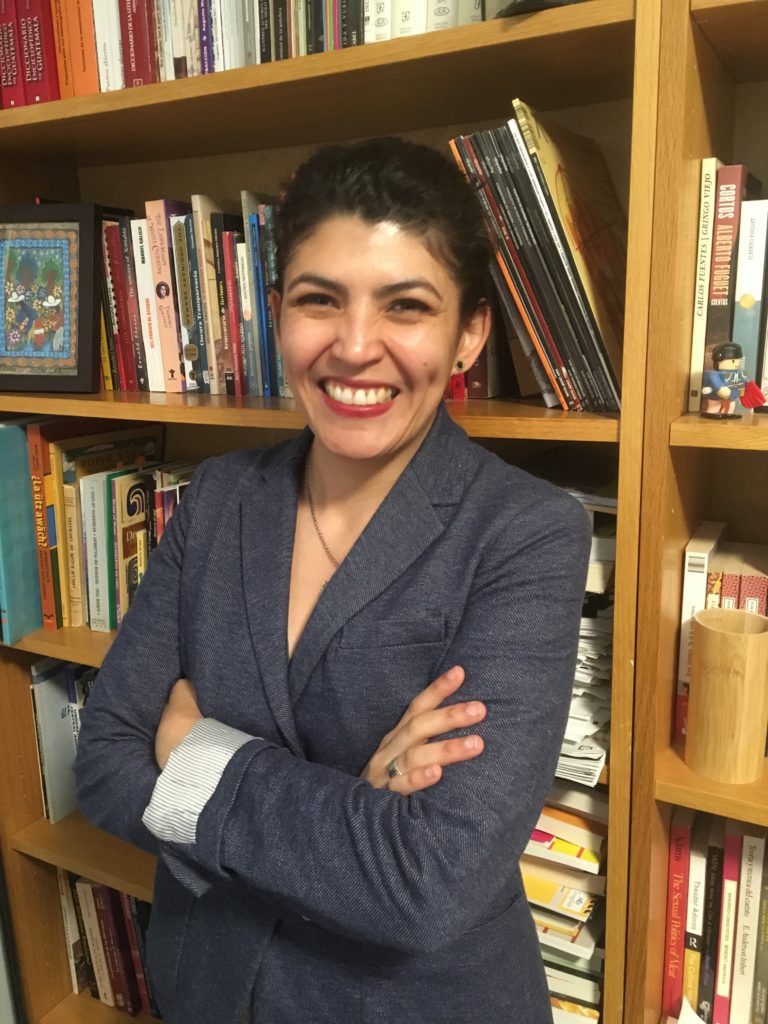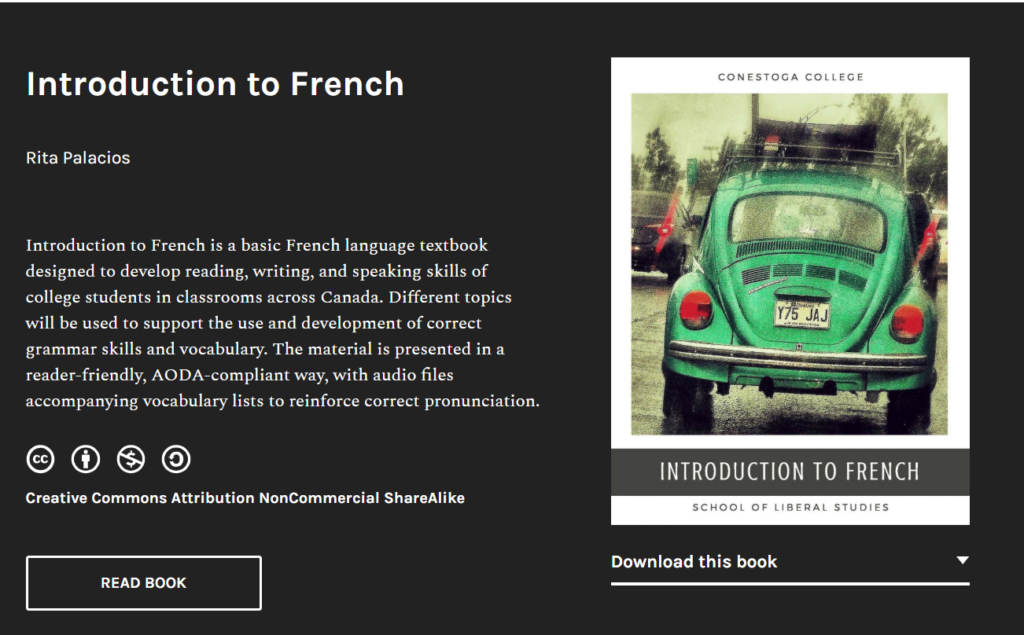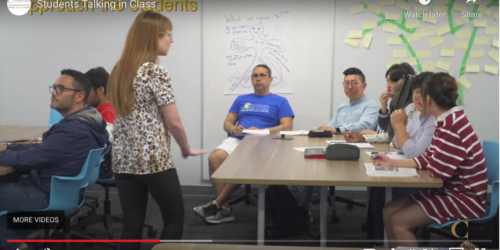Necesito OER

This post was written by Dr. Rita Palacios, faculty at Conestoga College about experiences in writing and creating Open Education Resources (OER) for courses.
In Search of OER for Language Teaching
As a language teacher, I’ve always had to work with language textbooks, which tend to be expensive and a bit rigid in their overall approach to language. Most language teachers will end up adapting things from the textbook or coming up with their own because no single type of language approach works for everyone.
Before I started at Conestoga, there was no textbook in the Spanish and French culture and language classes at the diploma level. This meant that there was a fair bit of freedom, but it also complicated things because at Conestoga things move fast: we always have great instructors but not much time at the start of the semester to create new materials. So, we needed:
- consistency and continuity across all course sections,
- quality baseline course content for instructors, and
- free or affordable resources for students.
In my online meandering and endless search for quality course materials, I came across Tex’s French Grammar at the Center for Open Educational Resources and Language Learning (COERLL) from the University of Texas, an amazing project. Though Tex’s French Grammar is an excellent French language OER, it didn’t quite meet the needs of our Conestoga faculty and students. In conversation with staff from the Library, we decided we could adapt the material to create an OER that was specific to our needs.
We launched the first Introduction to French OER for Conestoga’s Introduction to French Culture and Language course (FREN1000) on eCampus Ontario in 2019. The OER includes audio recordings for all the vocabulary lists featuring a native francophone speaker from Ottawa. Since then, we have forged ahead and are now in the process of creating an OER for our Introduction to Spanish Culture and Language offering (SPAN1000).

For me, specifically, it has been invaluable to be able to shape the content: I am very aware of issues of representation, so it has been important for me to be able use material that speaks to our diverse student body, as well as to the places and peoples whose languages we teach. For example, most Spanish language textbooks focus a great deal on Spain, when in fact it’s only one of twenty-one countries were Spanish is spoken as an official language.
As for students, they really enjoy having access to the book at no cost. The majority of them choose to print it and at the end of the semester some have given me their printed copy to pass on to whoever may need it next. Instructors are happy they have material that has been tailored to their specific needs and that they can adapt. Overall, it has worked very well, and we’re hoping we can eventually do OERs for French II and Spanish II and, with luck, we may even be able to add German to the list!



